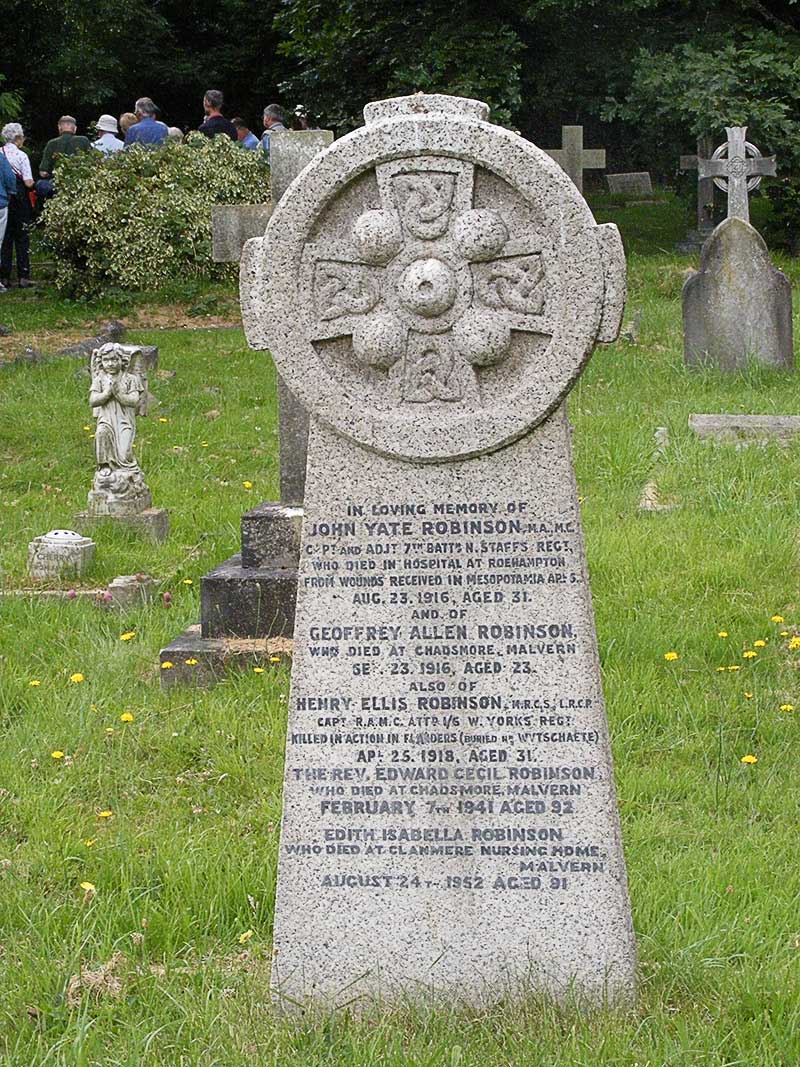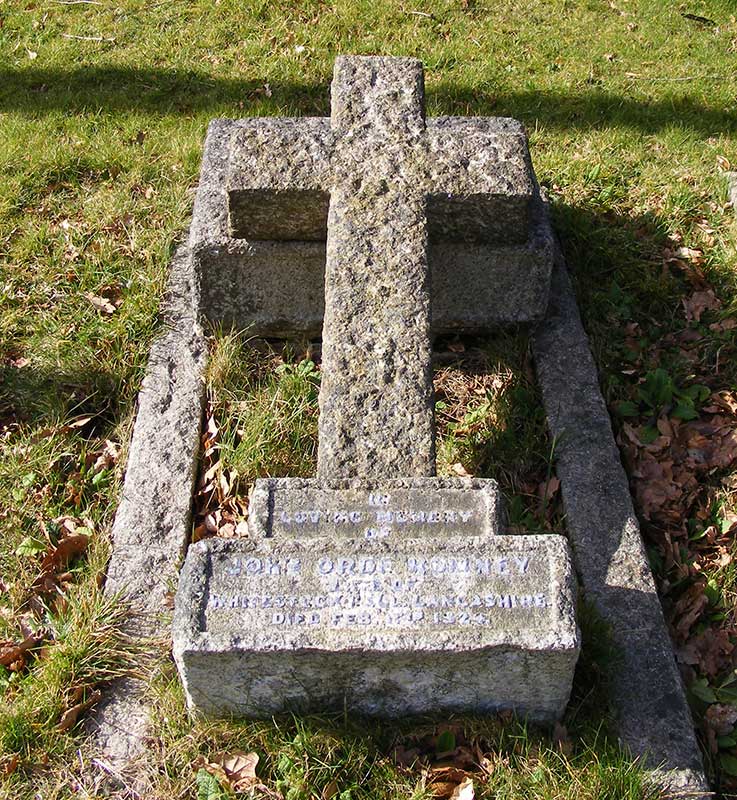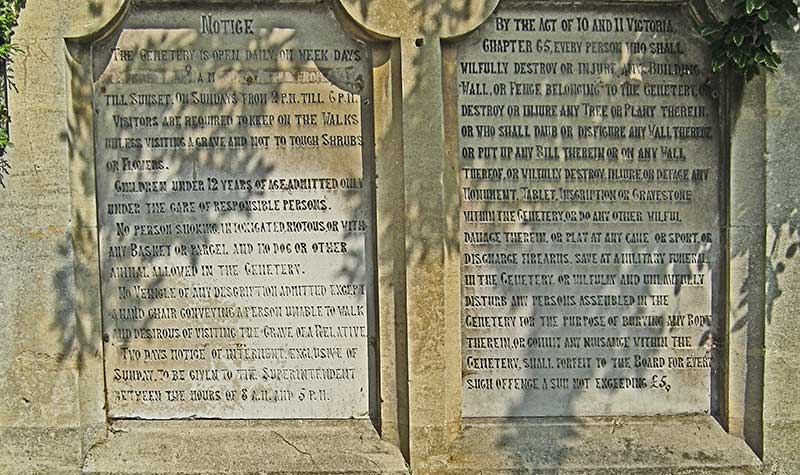
Angus and Rosemary's Miscellany
of Malvern - Local History
|
History menu > Great Malvern Cemetery - overview and menu
The Madresfield Road entrance
Contents of this pageMonumental inscriptions and records Menu of toursPhoto on right of contents: the bell tower between the cemetery chapels OverviewWe first visited Great Malvern cemetery to search for the memorial to water cure doctor James Wilson MD. Interested to find out more about the Victorian section of the cemetery we attended a guided tour sponsored by Malvern Civic Society in June 2013, led by Carleton Tarr, and another in July 2014; we visited again in March 2015 to look for another memorial and to record the Commonwealth War Grave headstones. In May 2016 we visited the cemetery once more to take a photograph of the memorial of Lt Victor William Price, for another historian, and while there recorded the memorials of architect Edmund Wallace Elmslie and Rev James Farrell, first Dean of Adelaide, South Australia. We returned twice in 2018 to look for the grave of photograper Norman May and others. On these pages you will find out more about Great Malvern Municipal cemetery, and stories of some of the people buried there. A more thorough and structured survey of the Victorian section of the cemetery has been undertaken by volunteers from Malvern Civic Society, but to our knowledge, this has not been published on-line apart from a booklet about notable 'residents'. The project is being taken forward by local historian Brian Iles who hopes to publish an in depth book about Grat Malvern cemetery in 2018. Those wanting to find a grave should know that the Malvern Family History Society (MFHS) has transcribed the burial register into a spreadsheet with permission from Malvern Town Council. This has not been made freely available on-line, but it's possible the MFHS might be able to help with your enquiry and provide a grave number. Then provided with the date of death and grave number the cemetery manager should be able to help you find the memorial. Enquiries should initially be directed to Malvern Town Council. The Find a Grave website www.findagrave.com records photos and biographical details, provided by volunteers, and you are encouraged to record your research there, and in that way Great Malvern cemetery will become better known and documented. BackgroundThe Metropolitan Internment Act 1850 allowed for the provision of publicly-funded cemeteries in London. The subsequent Burial Act 1853 extended this provision nationwide. This led to the growth in cemetery construction by companies and publicly financed burial boards/councils. Great Malvern Cemetery in Wilton Road opened in 1861, the need arising from the increase in population resulting from the 'water cure'. The photo above shows the arch between the two chapels near the Wilton Road entrance. It is quiet and peaceful with views looking upwards towards the Hills. The photo below shows the modern section looking west.
The cemetery is still in use and is run by Malvern Town Council. The main access is now from Madresfield Road on the north side where there is a small car park. BuildingsAt the original entrance in Wilton Road there is a large tablet listing the rules and punishment for damage or disturbance in Victorian times. 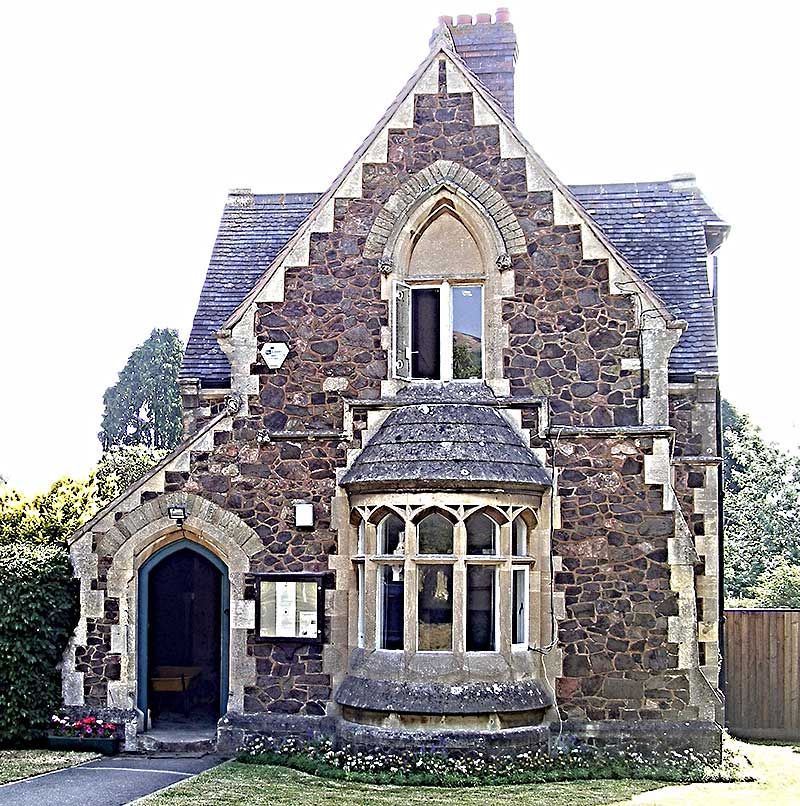
As you enter the gate, on the right you will see the Sexton's house, now the cemetery office (see photo opposite). At the back is a red-brick extension. Looking along the path you will see two chapels linked by an arch and bell tower. The small chapel on the right is still in use and was built as a Church of England (Anglican) chapel. The chapel on the left was for use by other religions such as Non-Conformists and Roman Catholics. Today the chapel on the left is used as a workshop. The photo below shows the bell tower and adjoining Anglican chapel. Far to the right, opposite the chapel door, is the grave of Jenny Lind.
Beyond is a smaller structure which was once a mortuary (see photo below). 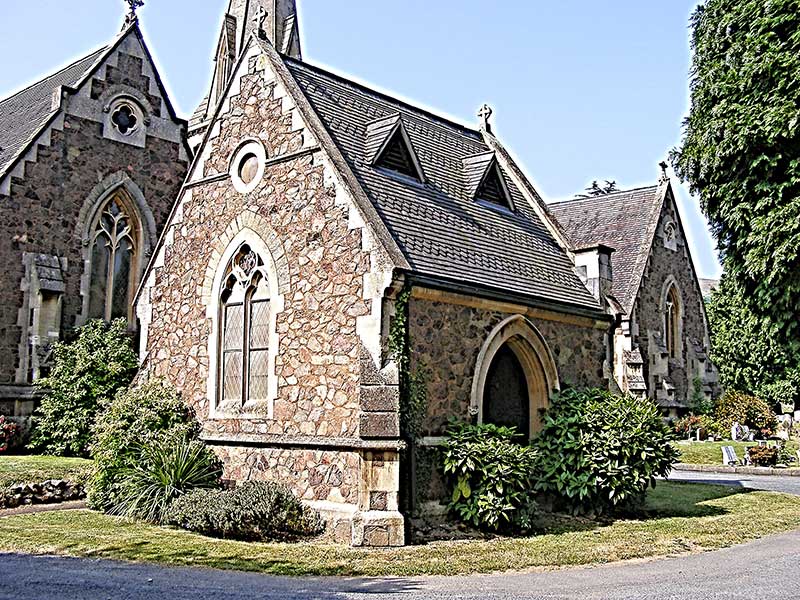
The cemetery is about fourteen acres in extent and contains about fifteen thousand burials. The Victorian section lies mainly to the south of the chapel, though you will occasionally find modern infill. We were told the Victorian section contains about six thousand burials and one thousand memorials. Sadly many of the inscriptions have weathered and are now barely legible. Plan of cemeteryWe have asked the Town Council whether it would be possible to see the burial plan held in the cemetery office, but it seems that viewing the records is not that straightforward as for example some burials are marked on sheets of cloth and some graves have been been renumbered. However the people in the cemetery office are very helpful, and often are able to locate individual memorials. The plan below (based on ref 6) shows the layout of the cemetery, where to park, the area set aside for the burial of cremation ashes, and main footpaths in the oldest section of the cemetery. The approximate position of some of the graves is numbered to act as points of reference.
Monumental inscriptions and recordsAs far as we know, no book has yet been published about the history of Great Malvern cemetery and its occupants other than an interesting booklet published and occasionally updated by Malvern Civic Society with photos of headstones and stories about notable people. Nor, as of 2013, had we found a photographic record of the monumental inscriptions or burial register published on-line, but that is changing. Malvern Civic Society has an on-going project, run by volunteers and led by Carleton Tarr to create a digital record of the monuments in the Victorian section and also explore the history of prominent people. We are not part of that project or trying to duplicate their work, but rather providing independant 'snapshots' of Malvern's history through exploring some of the memorials and the stories behind them, with particular reference to the people mentioned in our stories listed on the History menu. We are happy for Malvern Civic Society to copy, adapt and redistribute the photographs and stories on this and the following pages should they be of interest - but please be careful to verify what we have written. Information about some of the memorials can also now be found on the www.findagrave.com website. We have been told that author and local historian Brian Iles circa 2014 created an index of the burial register, for the period 1861 to about 1940 which historians can now view on microfilm, at Worcester Records Office, at the Hive. More recently, the Malvern Family History Society has received approval from the Town Council to transcribe the burial register with the aim of making copies available on-line initially at the Town Council, Malvern library and the Worcester Hive. First tour of the memorialsWe took photographs of some of the headstones and memorials which we saw during our visits, particularly those of men and women whose story we relate on our history pages. Here are bookmarks to the inscriptions we noted on our first tour and their stories. Sir Harry Edward and Lady Ellen Mary Dixey Sergeant Pilot James John Taaffe Edward Chance
He lived at Lawnside on the corner of Albert Road South, Great Malvern and you will find more about him on our page about Malvern schools. His widow contributed to the building of St Andrew's church at Poolbrook in his memory, which we think was once known as the Chance Memorial Chapel. His memorial in Malvern cemetery (near 3 on the plan) is a large stone cross which has toppled and is now lying flat on the ground. The inscription reads, Edward Chance May 27th 1881 aged 56 years 'When the fruit is brought forth, immediately he putteth in the sickle, because the harvest is come'. Mark 4 v29 Plaque in Great Malvern PrioryThere is also a large plaque on a pillar in Great Malvern Priory placed in memory of Edward Chance. The photo below shows just the inscription which is surrounded by elaborate scroll work. 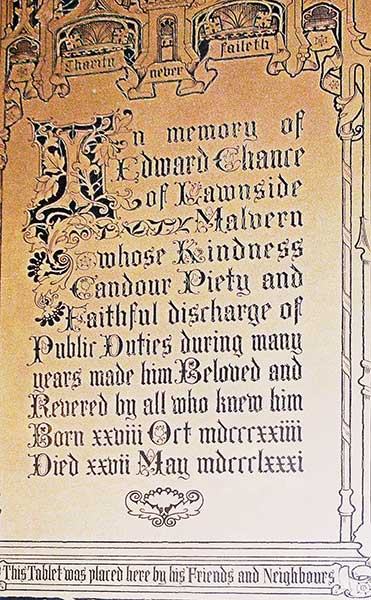
The touching inscription begins, 'Charity Never Faileth' and then continues, In memory of Edward Chance of Lawnside, Malvern whose kindness, candour, piety, and faithful discharge of public duties during many years made him beloved and revered by all who knew him. Born 25th October 1821 Died 27th May 1881 This tablet was placed here by his friends and neighbours. Dr James Wilson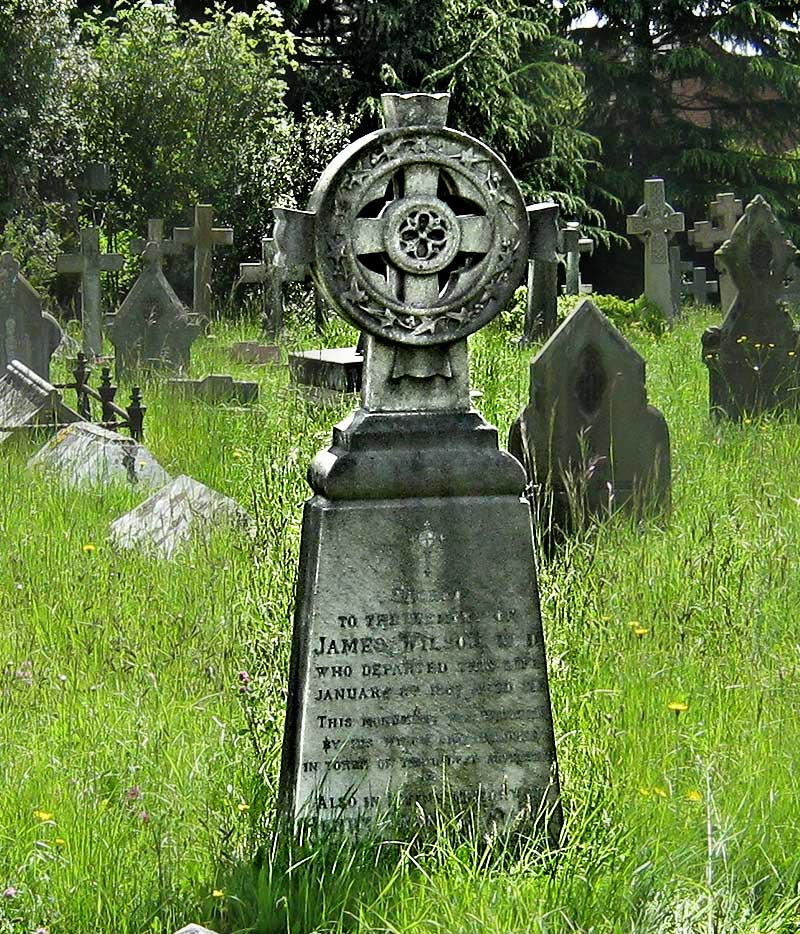
Dr James Wilson MD led the expansion of the 'water cure' in Malvern in Victorian times (ref 3, 4, 5). You will find his memorial (numbered 6 on the plan) to the right of the footpath approaching the chapel from Wilton Road. It is partially obscured by larger monuments nearer the path, but helpfully we found a small notice on the edge of the path which read:- 'Doctor James Wilson. It could be argued that but for the arrival of James Wilson in 1842 Malvern might have remained but a village. Having studied the ideas of an Austrian doctor, who extolled the benefits of water in the treatment of all kinds of illness and disease, and knowing of Doctor John Wall's pronouncement of the purity of water from the Malvern Springs, he came to Malvern and set up a hydrotherapy clinic. This proved to be a great success, and led to the transformation of the village into a popular and fashionable Spa town.' The inscription on the memorial reads: Sacred to the memory of James Wilson MD who departed this life January 8th 1867 aged 59. This inscription was erected by his widow and children in token of their deep affection. Also in loving memory of Henry Grattan Wilson only son of the above who died May 6th 1881 aged 39. Also in memory of Clara wife of the above B 1804 D 1888 You can read more about James Wilson on our page about the Victorian water cure doctors of Great Malvern. Edmund Wallace Elmslie
His memorial lies about 50 metres north of the office at the Wilton Road entrance in the second row back from the path. The ground below the long grass is very uneven here and you should take extreme care if you venture from the path. The inscription on the pedestal is very worn now, and is almost illegible on the bottom step.
In loving memory of Edmund W Elmslie Who fell asleep in Jesus July 1st 1889 The Lord is my Shepherd, I shall not want. Psalm XXiii The inscription on the bottom step is hidden by grass and almost worn away; we think it reads: also of Aubrey Wallace Elmslie Florence Ernestine Elmslie who are children of above Aubrey (Edmund's only son), and Florence were children who had sadly died infants.
A close up of the top of the monument is shown opposite. The burial register of Great Malvern cemetery records: Register entry: 2265 Edmund Wallace Elmslie aged 70 years Architect of Enderley, Avenue Road was buried on 4th July 1889 Plot: 1722 The funeral service was taken by Rev Francis Harvie Fowler (1857 - 1952), Curate of the Priory Church, who had been educated at Malvern College. Revd George Fisk
His tomb lies outside the south end of the Anglican chapel, and is approached by the footpath from Wilton Road. The inscription on one side reads, This stone is in memory of the Revd George Fisk LLB Vicar of Great Malvern born January 1st 1799 died August 31st 1871. And I heard a voice from heaven saying unto me, write blessed are the dead who die in the lord, from henceforth yea sayeth the spirit that they may rest from their labours and their works do follow them. Rev XIV 13 The reverse face reads, Also to the memory of Caroline Therissa widow of the Reverend George Fisk born February 29th 1796 died January 19th 1881 I have waited for thy salvation, O Lord Gen XIIX 18 Christ Church in Avenue Road was erected in 1874 and dedicated in his memory. George Fisk is also remembered by a large bronze plaque recessed into a pillar adjoining the North aisle of Great Malvern Priory. Revd James Farrell
The inscription reads: In memory of The very reverend James Farrell MA First Dean of Adelaide South Australia Who died 26th April 1869 Aged 66 years Rev James Farrell (1803 - 1869) was an Irish man, educated Trinity College Dublin, who went as a missionary to Australia in 1840. His story is recorded in the Australian Dictionary of National Biography. It seems, in 1866, he mistakenly drank a poisonous lotion instead of his medicine. This must have affected him greatly for he came to Great Malvern to partake of the 'water cure' where he sadly died, never returning to Australia.
Alfred Miles Speer
Alfred was a merchant who traded with South America. His inscription reads, In memory of Alfred Miles Speer Younger son of William Henry and Elizabeth Speer, who departed this life July 29th 1894 aged 69 years. In thy light shall we see light Psalm 36 v9 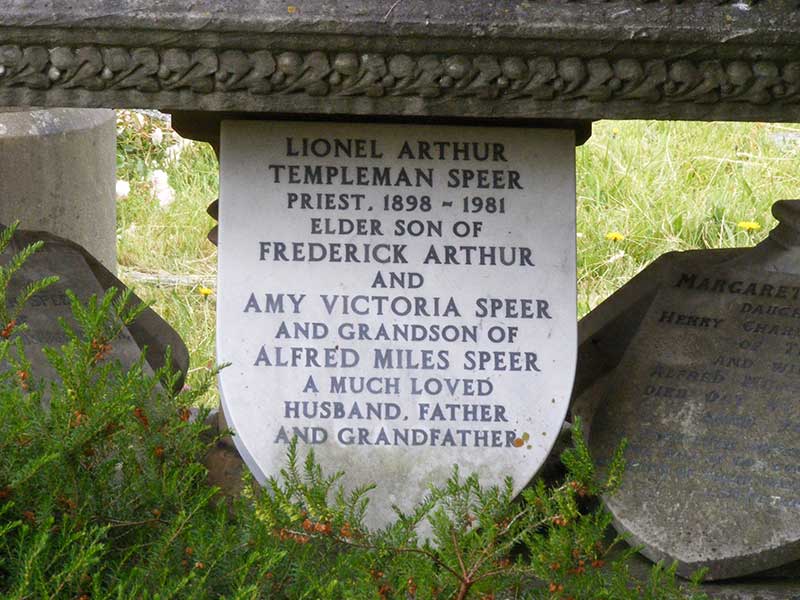
An inscription on another of the shields reads, Lionel Arthur Templeman SpeerPriest 1898 - 1981 Elder son of Frederick Arthur and Amy Victoria Speer, and grandson of Alfred Miles Speer, a much loved husband, father and grandfather. We found this piece written about Lionel's time as Rector of St Ternan's Episcopal Church in Banchory Scotland between 1943 and 1945. Here is a quote from the website:
The meeting mentioned above, mainly of Anglicans, at Malvern College in 1941, is widely regarded as the start of a movement that persuaded many traditional members of the Church of England to press for a welfare state. Its leader was William Temple, then Archbishop of York (source: the Guardian newspaper 2001). Jenny Maria LindNext to the tomb of the Speer family you will find a memorial to the Swedish singer Jenny Maria Lind and her husband Otto (see photo below). Since this photo was taken the grave has been 'restored' by Malvern Civic Society and the monument now 'shines' in sharp contrast to the surrounding graves.
Perhaps these days few people will have heard of Jenny Lind but she was one of the most famous singers of her time. The inscription on her memorial (see photo below) reads, In loving memory of Jenny Maria Lind wife of Otto Goldschmidt born at Stockholm October 6th 1820, died at Wynds Point Malvern November 2nd 1887. Also of Otto Goldschmidt born in Hamburg Aug 21 1829 died in London Feb 24 1907.
A railway locomotive was named after her. She is said to have given her last public performance in 1883 in aid of the Railway Servants Benevolent Fund (ref Oxford DNB). Jenny Lind is honoured in Poets' Corner, Westminster Abbey, with a plaque placed under the statue of Handel. More recently a sculpture was commissioned in 1987 from local sculptor Leslie Punter, of Horsham, near Martley; this once stood on a stone plinth in Priory Park, but is now indoors by the doors to Malvern Theatre (see photo opposite). Charles William Dyson Perrins
You can find out more about him on our page about Davenham, which was his home in Great Malvern. His memorial stone (near 7 on the plan) is now leaning over which is sad to see considering that he gave so much to the town of Malvern. Malvern Civic Society hopes to have the monument restored in the near future. If you look at the memorial closely you will see the intricate intertwining of the carved design. The simple inscription at the base reads, Charles William Dyson Perrins DCL DL JP, May 26th 1864, Jan 29th 1958. Florence Winifred Midwood Perrins Dec 10 1881, Dec 28 1968. Florence was Dyson's second wife. On the side of the memorial is a second inscription that reads, In memory of Catherine Christina born July 2 1864, died Jan 31 1922 and of John Stewart Dyson born Nov 27 1899, died May 26 1913 the wife and the youngest son of CW Dyson Perrins, Davenham, Malvern Charles' daughter Margaret Susan Dyson Perrins married Admiral Oliver Backhouse, the son of banker Sir Jonathan Edmund Backhouse, 1st Baronet. Sir Harry Edward and Lady Ellen Mary Dixey
Their memorial is a heavy stone cross near the entrance at Wilton Road. The inscription at the base reads, In precious memory of Harry Edward Dixey Kt DL JP MD, born August 26th 1853, died January 6th 1927. God's finger touched him and he slept. Also of his beloved wife Ellen Mary Dixey born August 10th 1861, October 13th 1927. Guess now who holds thee? Death I said - but there the silver answer rang, not Death but Love. (From a poem by Elizabeth Barrett Browning). Harry Edward Dixey was appointed Deputy Lieutenant (DL) of the county of Worcestershire 19th June 1919 and received the honour Knight Bachelor in 1925. Harry was prominent in county affairs and was instrumental in the opening of a TB sanatorium at Knightwick which opened in 1902 and closed circa 1960. His obituary was published in the British Medical Journal (BMJ). Arthur Edward Townshend
Sacred to the memory of Arthur Edward Townshend, who entered into rest October 23rd 1927. All things work together for good, to them who love God Rom 8 28 Arthur Edward Townshend, born Ireland 1863, was the son of John Hancock Townshend who, according to the 1881 census, was an Irish landowner and had many children. Arthur's elder brother William Tower Townshend married the Honourable Geraldine Emily Curzon, daughter of the Revd Alfred Nathaniel Holder Curzon, Rector of Kedleston in Derbyshire, who inherited the title of 4th Baron Scarsdale. A Townshend family historian has told us that Arthur Edward Townshend is just one of many Anglo/Irish Townsends descended from Colonel Richard Townsend - an officer in Cromwell's Irish Army. Click to see a Townshend family group including Arthur, circa 1898 Click to read more about Colonel Richard Townsend Sergeant Pilot James John Taaffe
He was the only son of Frank Armstrong and Ada Taaffe then of Pickersleigh Road. It appears his Lancaster, returning from a mission, collided with another aircraft while circling to land in the dark at Waddington. The inscription reads, In loving memory of James John Taaffe Sergeant Pilot RAF VR Died November 8th 1942, aged 20 years. Ada Beatrice Taaffe mother of the above Died 21st Sept 1946 Frank Armstrong Taaffe Died 8th Dec 1948 (The London Gazette records that Frank Armstrong Taaffe of Oakwood, West Malvern; formerly of Abbotshill, Abbey Road, Malvern; retired hotel keeper died on 8th December 1948). You will find other memorials to servicemen who fell in both World Wars. Generally however, servicemen were buried where they fell and it is only the few wounded who were brought back to the UK and died of their wounds who are buried here, together with those who died of either accident or illness 'at home'. In a few cases the names of servicemen who are buried abroad have been noted on monuments when other members of the family have been buried - for example see Captain Henry Ellis Robinson mentioned below. We joined another tour of the cemetery sponsored by Malvern Civic Society on 16th July 2014 which included a display in the chapel by Brian Iles when copies of the first pages of the burial register and stories of notable residents could be viewed. The chapel is surprisingly small inside so we judge unsuitable for large gatherings. While following our guide, and during a subsequent visit, we recorded a few more images of the headstones that caught our eye. Revd Edward Cecil RobinsonIn the south western quarter of the cemetery we found a memorial to the Revd Edward Cecil Robinson, his wife, and three of their sons who died during the Great War.
The inscription reads:
Revd Edward Cecil Robinson, born Liverpool about 1849, was the son of sculptor Charles Backhouse Robinson whose father Nicholas Robinson was a prosperous Liverpool corn merchant. Nicholas Robinson built Sudley House and was mayor of Liverpool 1828-1829. Edward obtained his BA from Exeter College Oxford in 1872 and was in turn curate at Christ Church Lichfield, St Mary's Woolwich, St Michael's Lower Sydenham, St Mary's Lewisham, and Catford. In 1894 he was appointed vicar of Hanbury in Staffordshire. The 1911 census records Edward as a Church of England clergyman living at Hanbury Vicarage, Burton-on-Trent. Possibly his church was St Werburgh. Edward married Edith Isabella Milner in London in 1881 and they had seven sons, Edward Backhouse, John Yate, Lawrence Milner, Henry Ellis, Hugh Methven, Geoffrey Allen and Charles Stafford Gray Robinson. We assume Edward and Edith retired to 'Chadsmore' a house in Orchard Road, Great Malvern. They were not the only residents of Orchard Road to lose sons in the Great War. Their neighbours Harry Arbuthnot Acworth and Anna Mary Godby Acworth (daughter of Colonel C V Jenkins, 47th Bengal Light Infantry) lost their sons Douglas Harry Ackworth and John Arden Ackworth. James MacKenzie who lived nearby at Daresbury in Priory Road also lost his sons. In 1941 newspapers reported Rev Edward Robinson's funeral at Great Malvern Priory. Of the four sons who were living after the Great War, we gather Edward Backhouse became a tea planter, Hugh Methven became a schoolmaster, Charles Milner joined the diplomatic service and was awarded the CMG, and Charles Stafford Gray Robinson became a chartering department manager. John Orde Romney
|
|
Last updated 30th September 2018 |
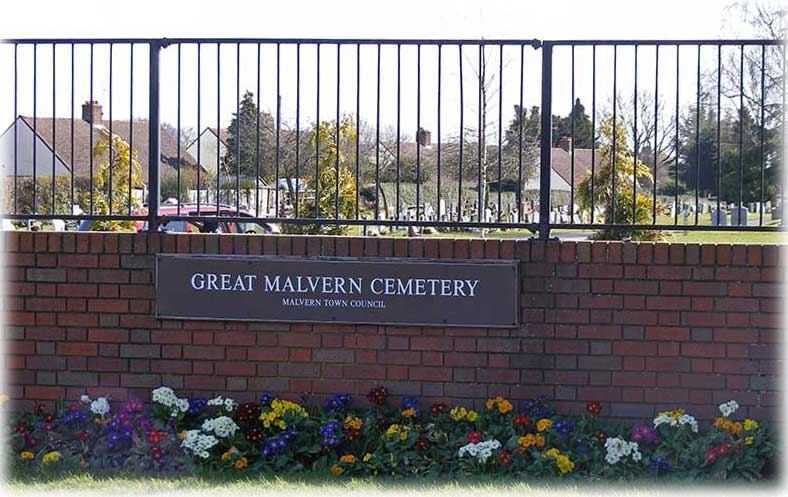
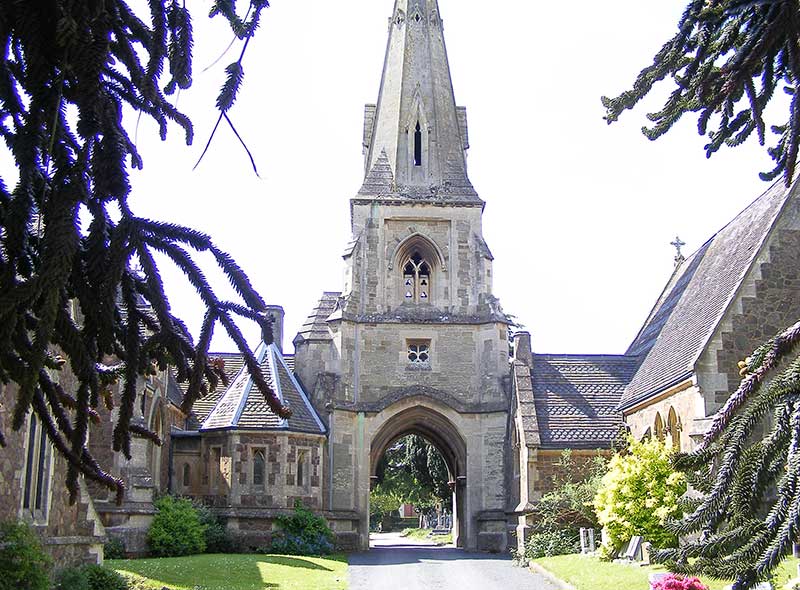
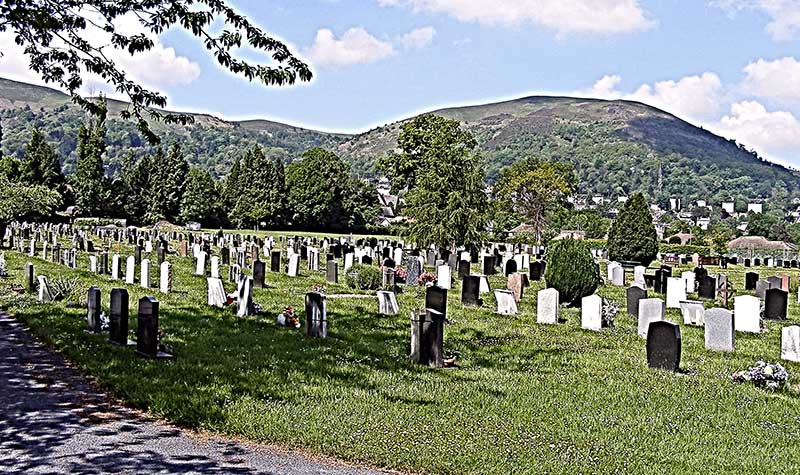
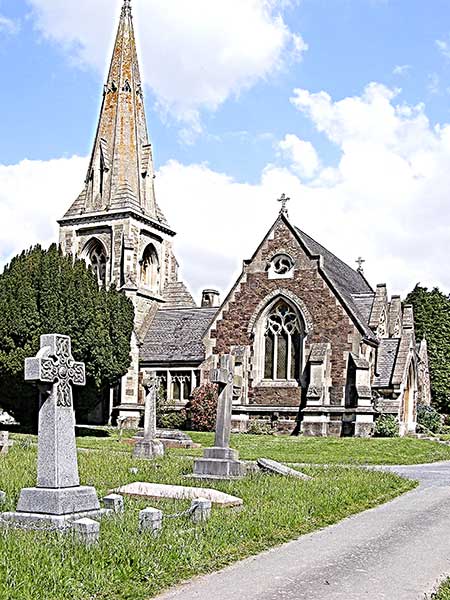
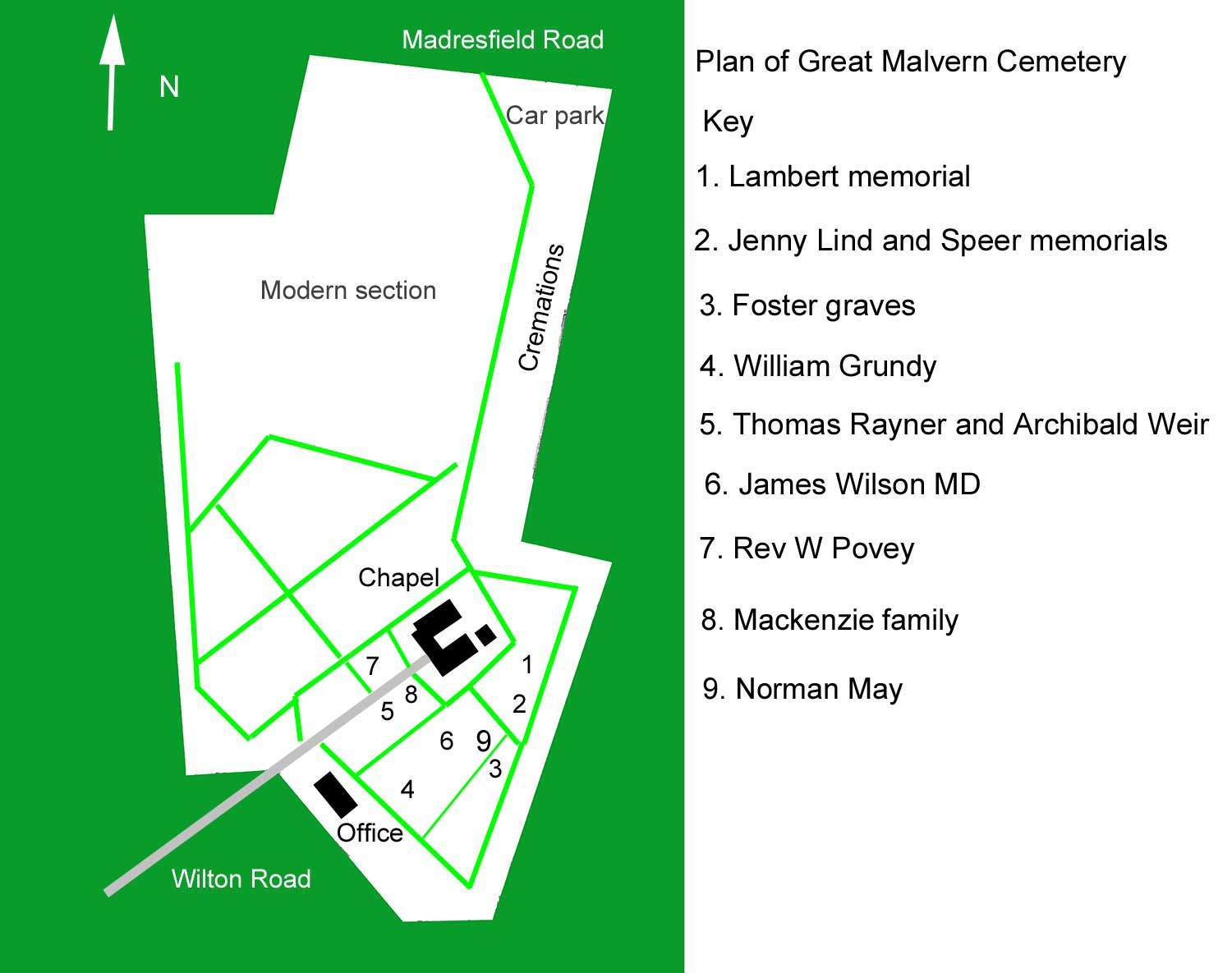
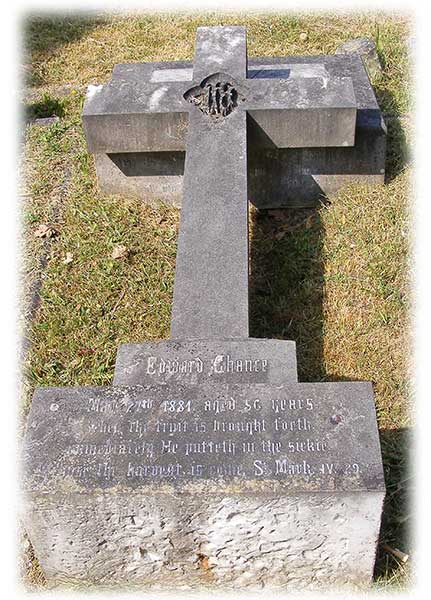 Edward Chance was a member of the family that founded a glass making
business named
Edward Chance was a member of the family that founded a glass making
business named 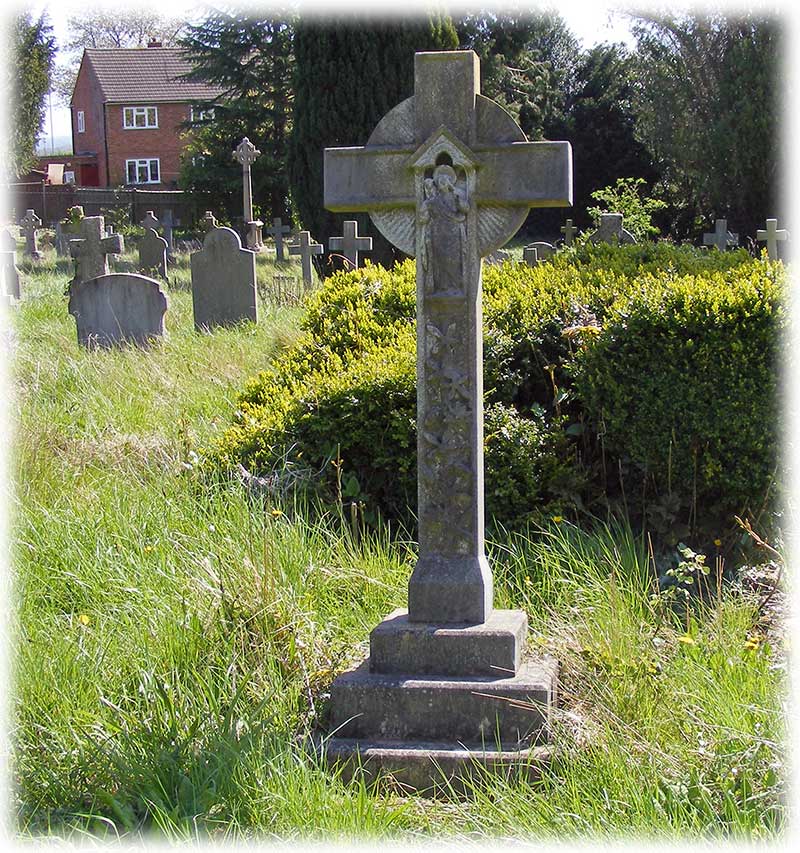 Edmund
Wallace Elmslie was the architect who, amongst other works, designed the
Imperial Hotel, now the home of Malvern St James girls' school and Great
Malvern railway station.
Edmund
Wallace Elmslie was the architect who, amongst other works, designed the
Imperial Hotel, now the home of Malvern St James girls' school and Great
Malvern railway station. 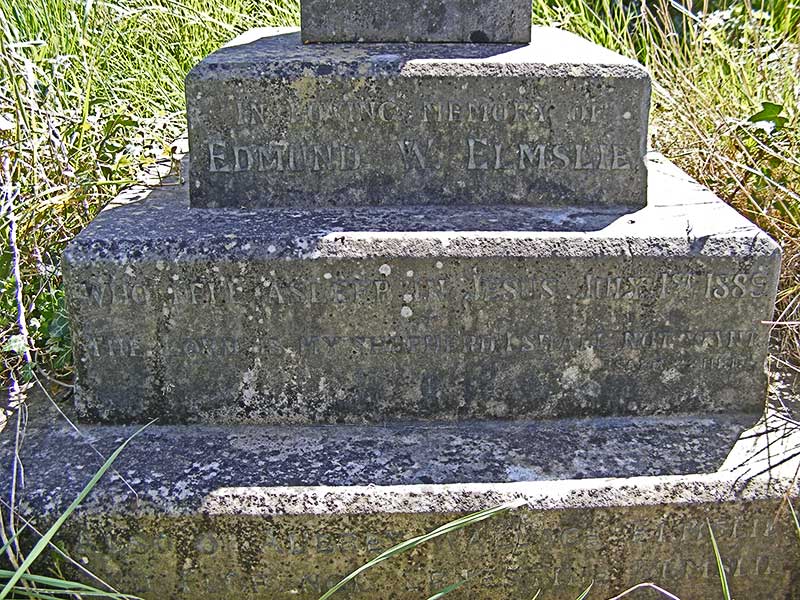 The
inscription reads:
The
inscription reads: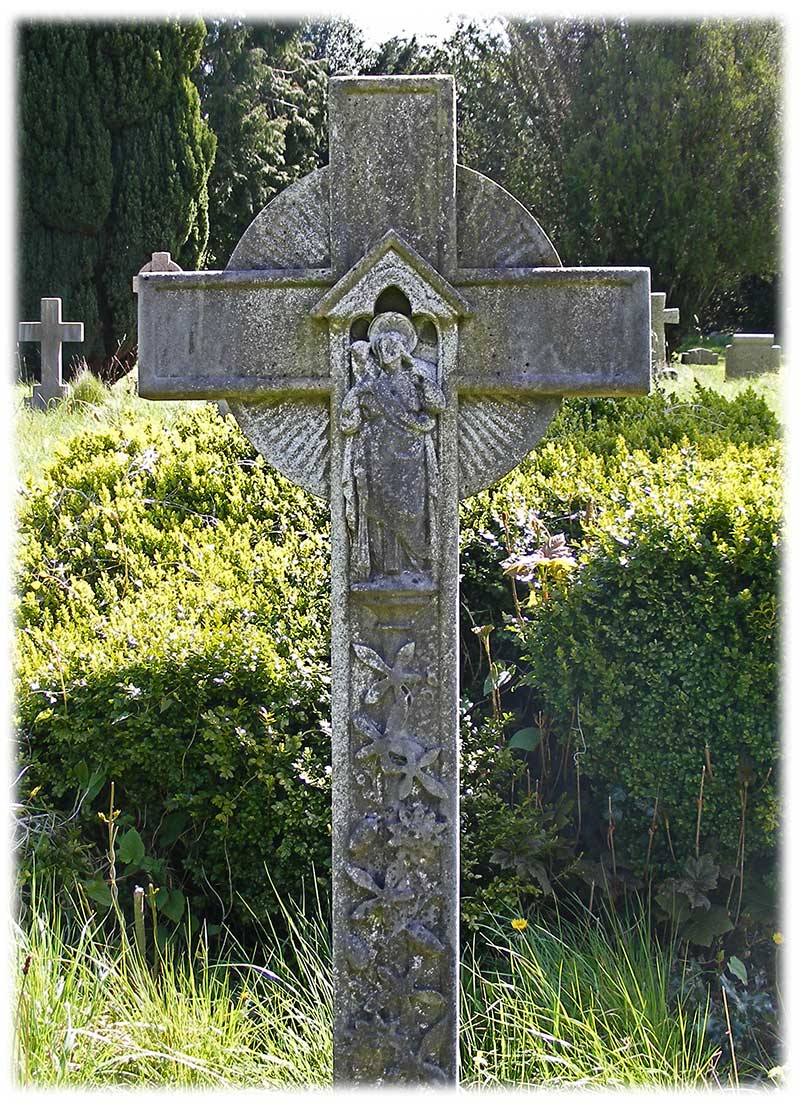 A
member of the Civic Society told us the that the monument was designed by
local stone mason
A
member of the Civic Society told us the that the monument was designed by
local stone mason
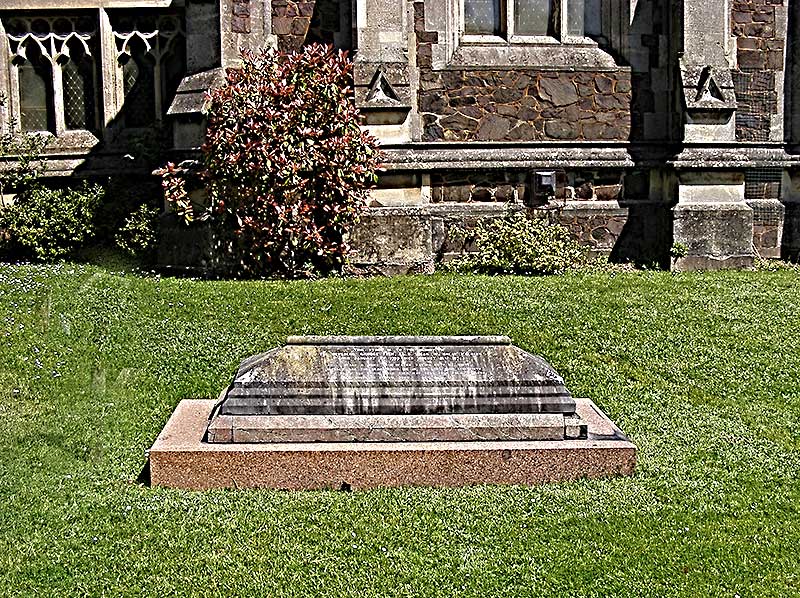 Revd
George Fisk was vicar of Great Malvern Priory from 1856 - 1871
following on from Revd John Rashdall. He led the burial service of James
Wilson MD in 1867.
Revd
George Fisk was vicar of Great Malvern Priory from 1856 - 1871
following on from Revd John Rashdall. He led the burial service of James
Wilson MD in 1867.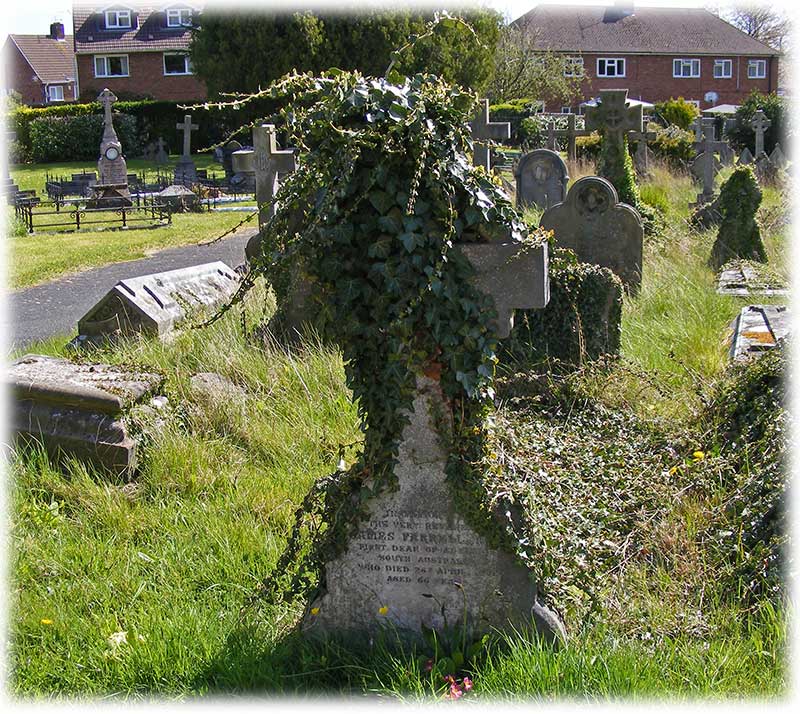 On
the other side of the path (near 5 on the plan) is a relatively small memorial, almost completely covered in
ivy, in memory of Rev James Farrell.
On
the other side of the path (near 5 on the plan) is a relatively small memorial, almost completely covered in
ivy, in memory of Rev James Farrell.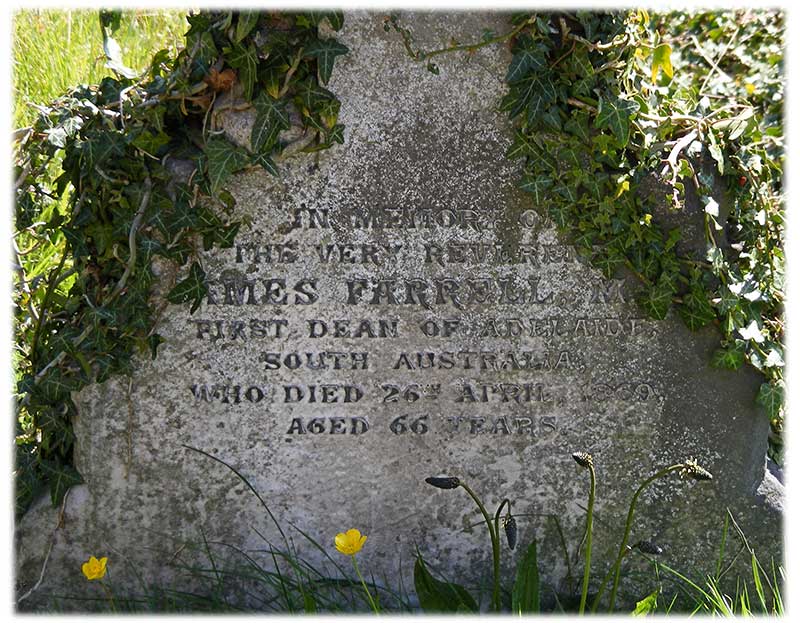
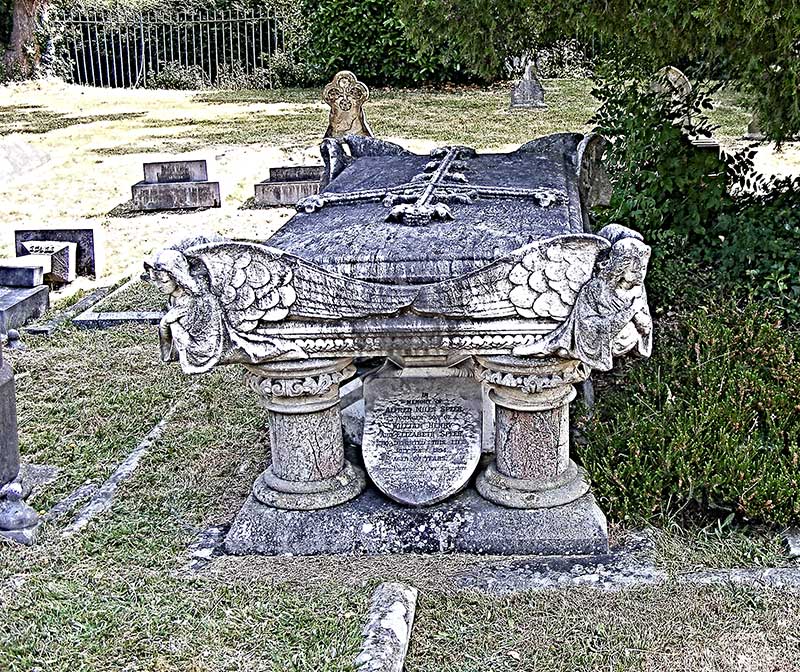 On
the eastern side of the chapel, about one hundred yards from the door (see 2
on the plan), in the shadow of a fir tree lies a heavy table
top tomb in memory of Alfred Miles Speer who built
On
the eastern side of the chapel, about one hundred yards from the door (see 2
on the plan), in the shadow of a fir tree lies a heavy table
top tomb in memory of Alfred Miles Speer who built 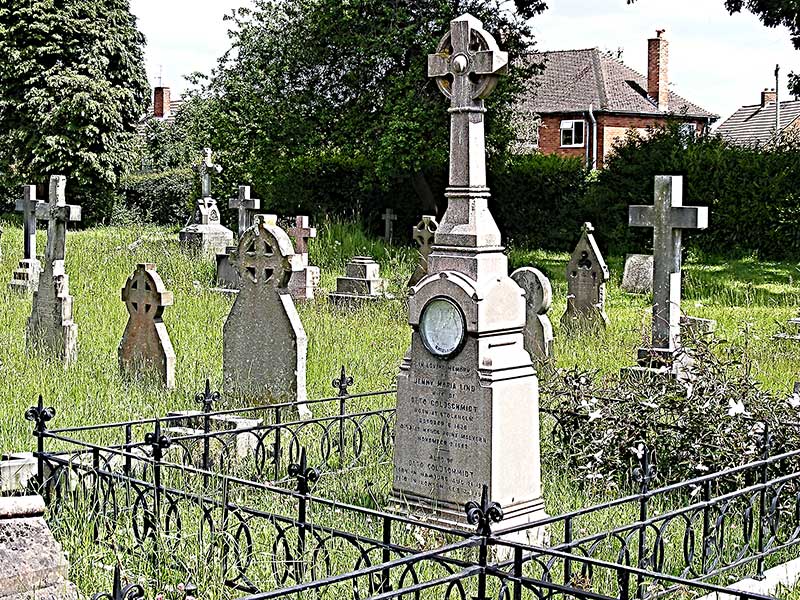
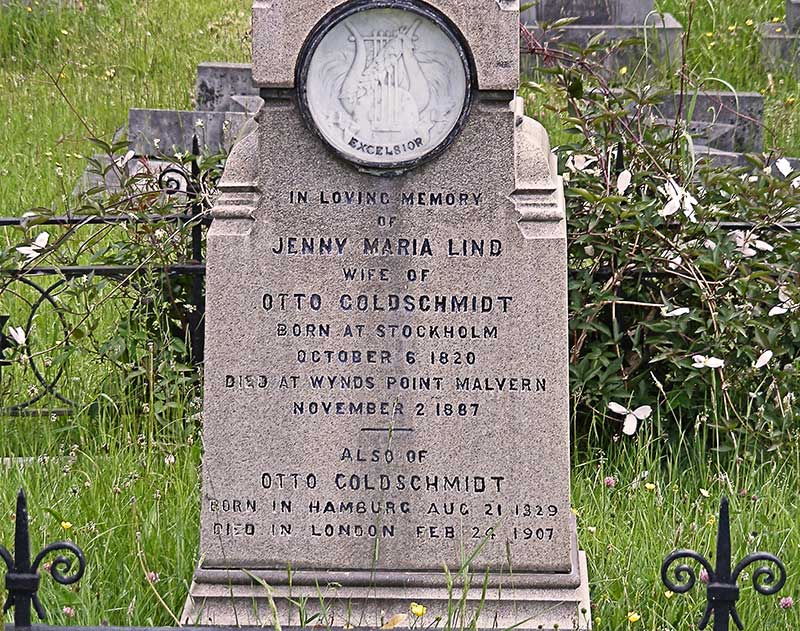
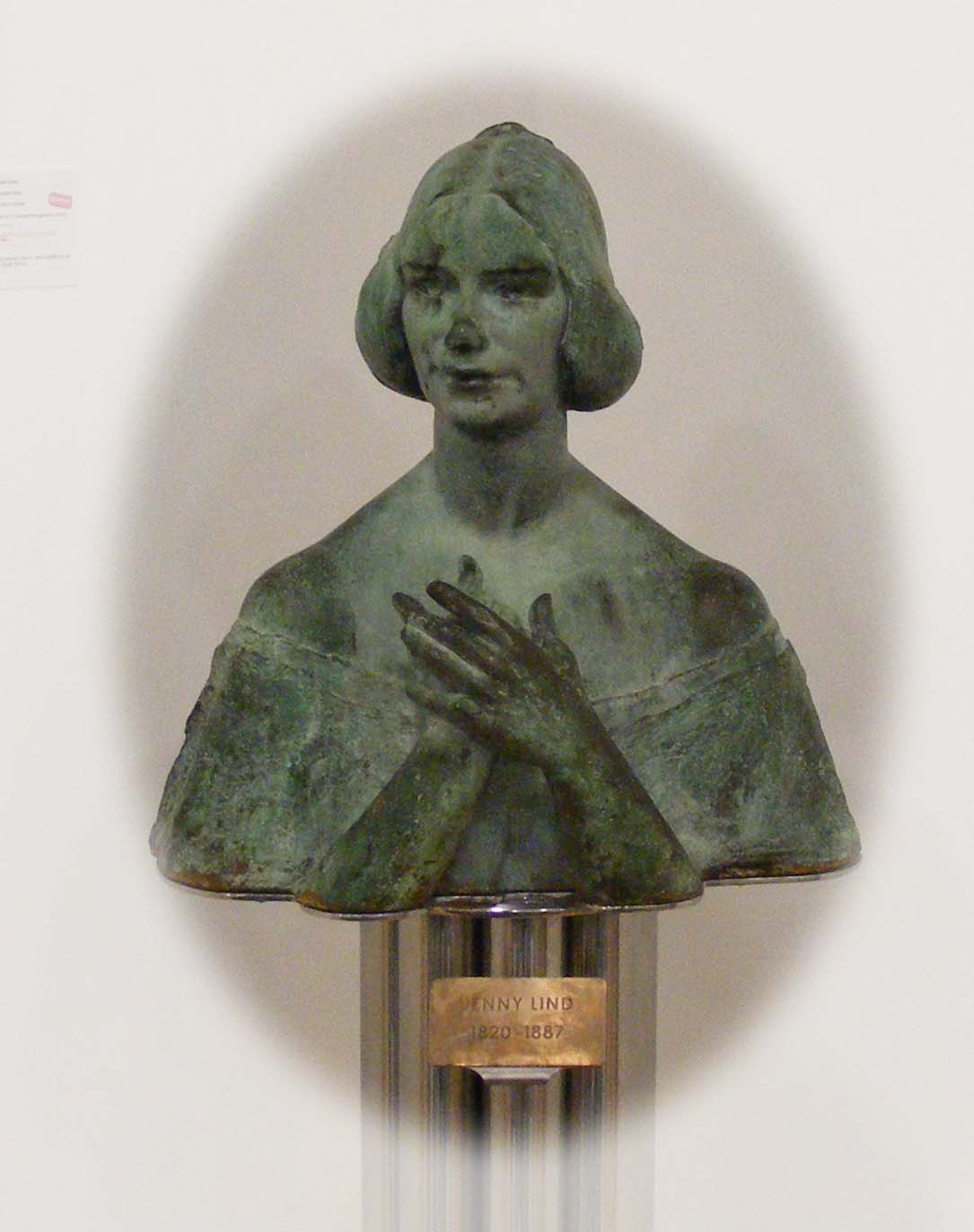 Jenny
Lind spent the last years of her life living at Wynd's Point to the
north of British Camp where she died of cancer in 1887.
Jenny
Lind spent the last years of her life living at Wynd's Point to the
north of British Camp where she died of cancer in 1887.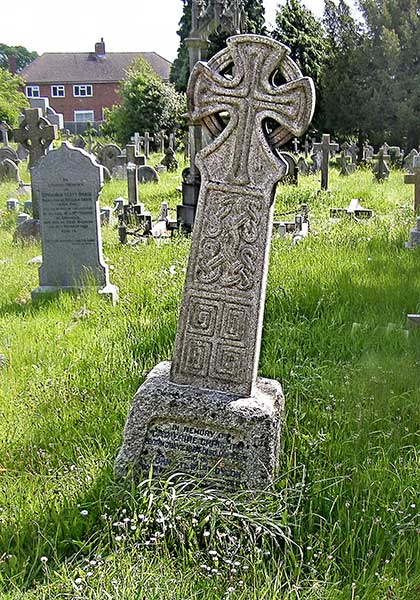 Philanthropist
Charles
William Dyson Perrins was the grandson of one of the founders of the Lea and
Perrins Worcestershire Sauce company.
Philanthropist
Charles
William Dyson Perrins was the grandson of one of the founders of the Lea and
Perrins Worcestershire Sauce company.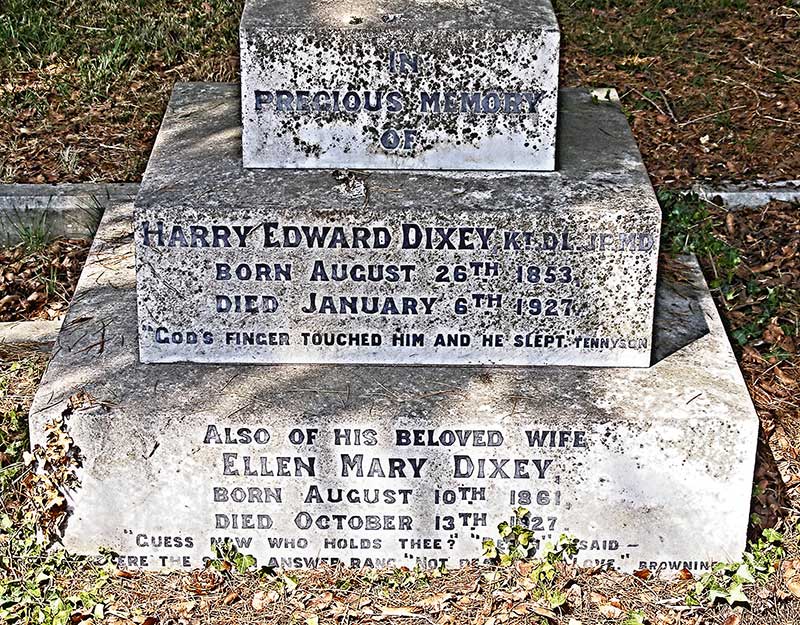 Ellen
Mary Perrins, the sister of Charles William Dyson Perrins, married medical doctor
Harry Dixey MD and they lived at Woodgate in Albert Road North not far from
Ellen
Mary Perrins, the sister of Charles William Dyson Perrins, married medical doctor
Harry Dixey MD and they lived at Woodgate in Albert Road North not far from 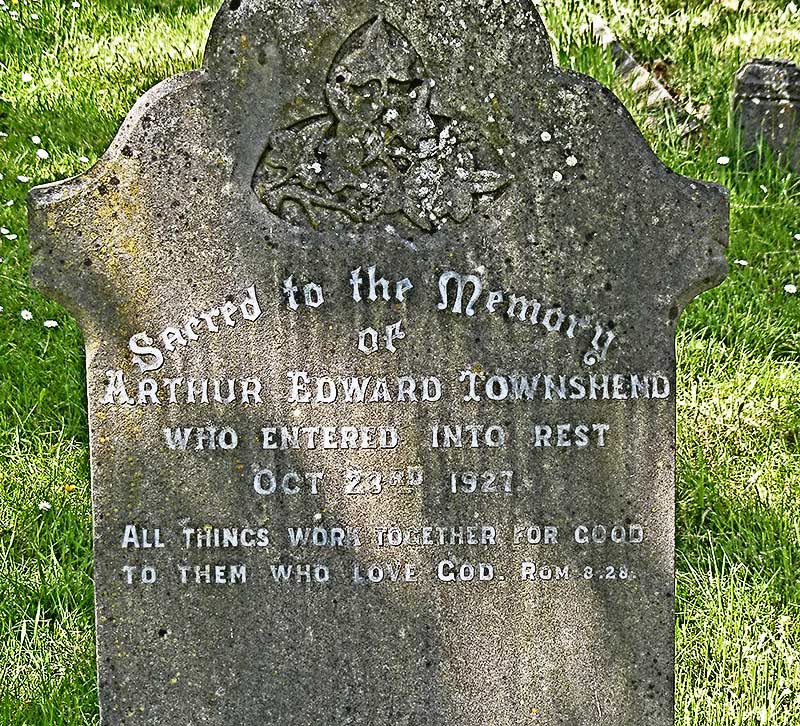 We
wondered why water cure doctor Ralph Barnes Grindrod named his home Townshend
House, but found no family of that name in Malvern, apart from a lady named
Emily Jane Townshend Russell (1827 - 1915) of Peckham Grove, at Poolbrook.
So we were interested to find the headstone of an Arthur Edward Townshend, not
far from that of Harry and Ellen Dixey. However as far as we know he had no
connection with Malvern, apart from retiring to Rock Villa on the Wyche Road
in later life. The inscription on his headstone reads:
We
wondered why water cure doctor Ralph Barnes Grindrod named his home Townshend
House, but found no family of that name in Malvern, apart from a lady named
Emily Jane Townshend Russell (1827 - 1915) of Peckham Grove, at Poolbrook.
So we were interested to find the headstone of an Arthur Edward Townshend, not
far from that of Harry and Ellen Dixey. However as far as we know he had no
connection with Malvern, apart from retiring to Rock Villa on the Wyche Road
in later life. The inscription on his headstone reads: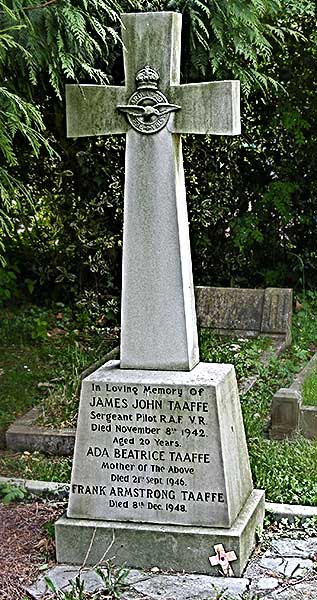 When
we visited Great Malvern Cemetery to search for the grave of water cure
doctor James Wilson, we came across a memorial to Sergeant Pilot James John
Taaffe, IX (bomber) squadron, RAF Volunteer Reserve, who died 8th November
1942 aged only 20 years. James' grave lies on the western boundary of the
cemetery.
When
we visited Great Malvern Cemetery to search for the grave of water cure
doctor James Wilson, we came across a memorial to Sergeant Pilot James John
Taaffe, IX (bomber) squadron, RAF Volunteer Reserve, who died 8th November
1942 aged only 20 years. James' grave lies on the western boundary of the
cemetery.